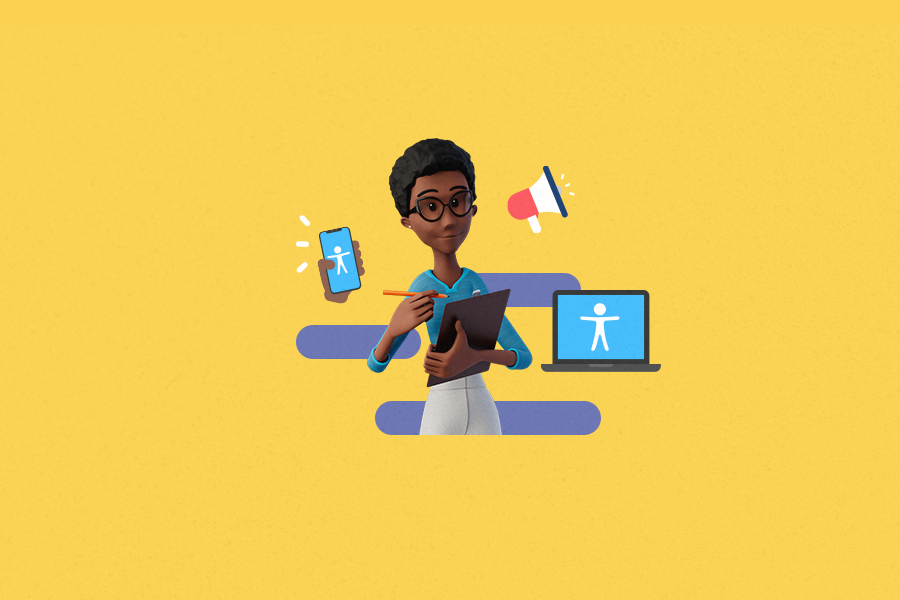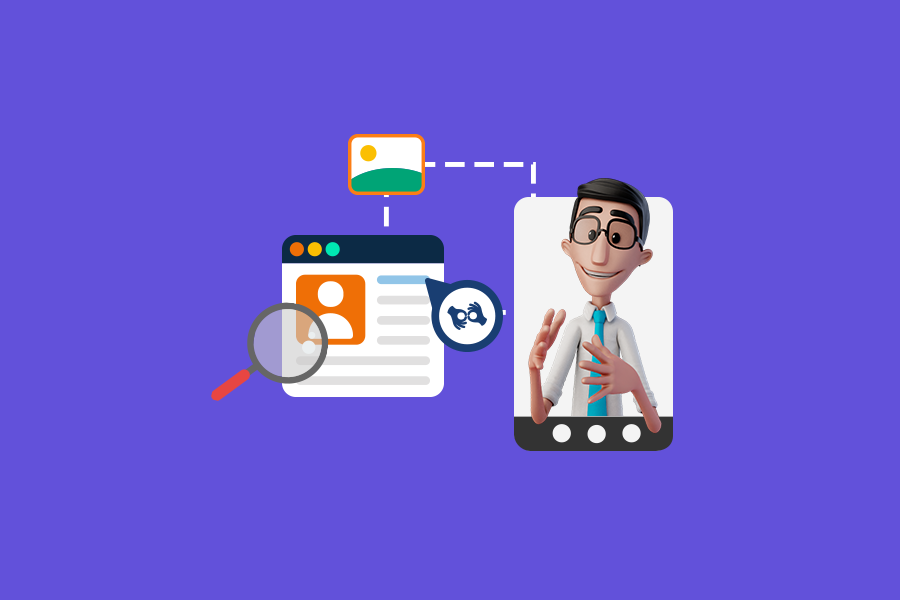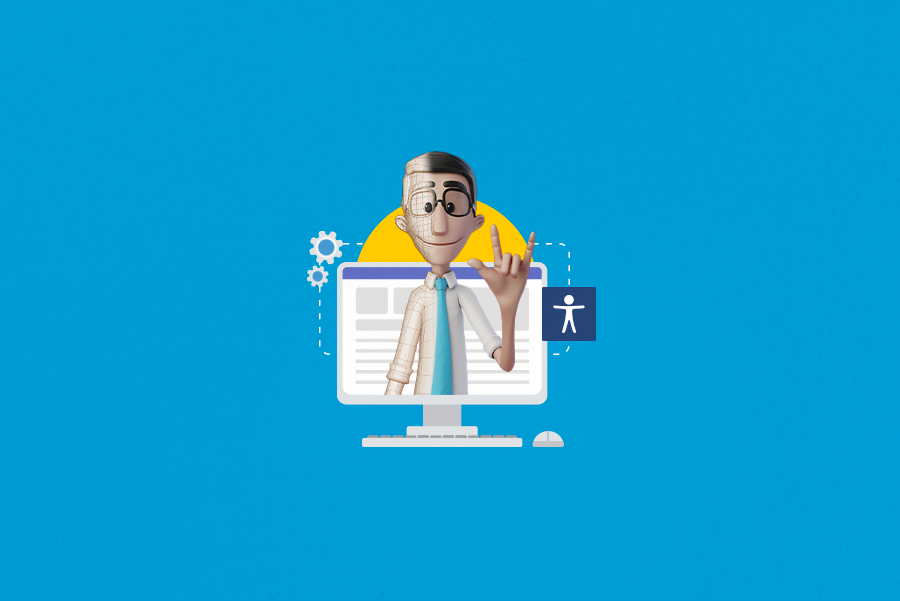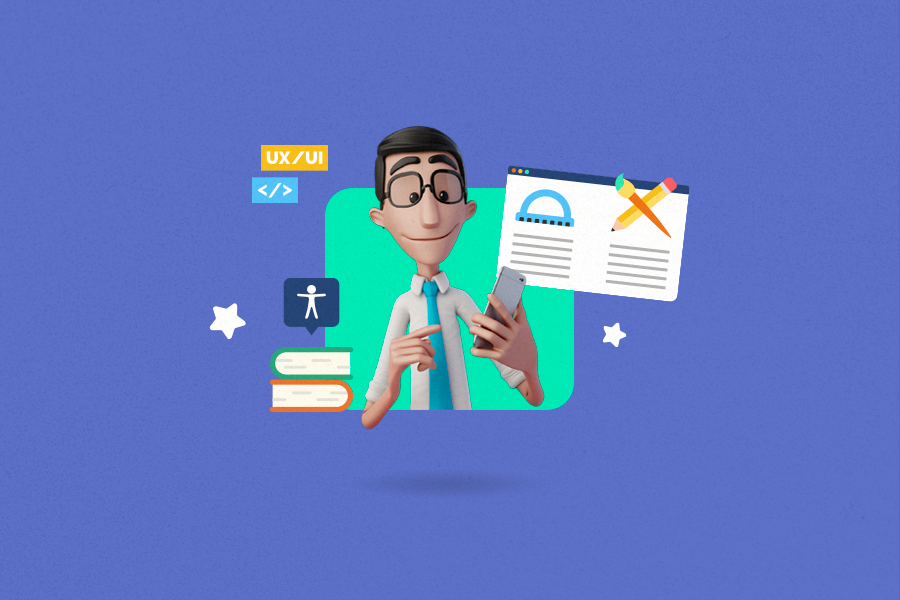
Accessibility and Marketing: importance of accessible marketing

The digital age has revolutionized the way we communicate, interact and consume information. With the increasing dependence on the internet, it is essential to ensure that all users can access and fully enjoy the content available online. In this context, digital accessibility and accessible marketing play a crucial role in the inclusion and equal opportunities for people with disabilities and those with other specific needs.
With that in mind, how about learning more about how accessibility and marketing can work together? Stay with us and check out valuable tips for creating accessible content!
What is digital accessibility?
Digital accessibility refers to the practice of making content, websites, applications, and other online platforms accessible to everyone, regardless of their abilities or limitations. This includes people with visual, hearing, motor, cognitive disabilities, and other specific needs.
The main idea is to ensure that all individuals can perceive, understand, navigate, and interact with digital content without barriers or obstacles that could hinder their experience. Digital accessibility goes beyond compliance with laws and regulations; it is a commitment to inclusion and equity. 😉
Why is adopting digital accessibility important?
Digital accessibility is essential for several reasons, including:
- Inclusion and diversity: By making your content accessible, you expand your audience to include people with disabilities, the elderly, and other groups that might be excluded due to digital barriers.
- Legal compliance: In many countries, there are laws and guidelines that require digital accessibility for certain types of organizations. This includes the Americans with Disabilities Act (ADA), which establishes standards to ensure accessibility for people with disabilities.
- Improved user experience: An accessible interface benefits all users, providing a more intuitive, clear, and user-friendly experience.
- Market potential: By embracing accessibility, you can reach new markets and niches, as well as strengthen brand loyalty and recognition for your commitment to inclusion.
- Competitive advantage: In an increasingly competitive market, companies and brands that invest in accessibility can stand out positively among the competition.
Tips for creating accessible content
Now that you understand the importance of digital accessibility and accessible marketing, let’s explore some practical tips for creating more inclusive content. Let’s go!
Use proper text structuring
Properly structuring the text with headings (h1, h2, h3, and so on) and well-organized paragraphs makes reading and understanding the content easier, especially for people using assistive technologies such as screen readers.
Font
Choose a legible font of an appropriate size. Avoid overly stylized or very small fonts, as they may hinder readability, especially for people with visual disabilities or dyslexia.
Alignment
Did you know that justified text is not accessible? Keep the text aligned to the left, as it makes the content easier to follow and distinguish between different sentences and paragraphs.
Inclusion of links
When inserting links, avoid vague expressions like “click here”. Instead, use descriptive text that informs the user where the link will lead.
Information distribution
Organize information clearly and logically, highlighting key points. Avoid overloading the reader with excessive information.
Copywriting
Use clear and objective language, avoiding unnecessary jargon and technical terms. Remember that simplicity facilitates understanding.
Hashtags
For your social media posts, avoid long and complicated hashtags. Opt not to use too many of them, as it may hinder reading for people with visual disabilities.
Emojis
Moderate use of emojis can add personality to your content, but avoid using them excessively, as they can be confusing for people with visual or cognitive disabilities.
Contrast and visibility
Choose color combinations that offer good contrast between the text and the background. Colors that are too similar can make the content illegible for some people.
Add descriptions to images
When using images in your content, provide alternative descriptions (alt text) so that people with visual impairments can understand the content of the images through screen readers. Also, alt texts are great allies for SEO best practices.
Include captions, transcripts and Sign Language interpretation in videos
When using videos, make sure to include captions for people with hearing disabilities, as well as transcripts for access to written content. It is also super important to offer Sign Language interpretation for an even more inclusive experience for the Deaf community.
Diversify content formats
Diversify your content to meet the different preferences and needs of users. Offer text, images, videos, and audio to ensure that everyone can consume your information.
Understand how assistive technologies work
Familiarize yourself with assistive technologies, such as screen readers, adapted keyboards, and automatic Sign Language translators. This will help you better understand how people with disabilities interact with digital content and adapt your practices to better serve them.
Why invest in digital accessibility?
Investing in digital accessibility and accessible marketing is an initiative that brings benefits for both people with disabilities, companies and brands. In addition to being an ethical and inclusive practice, accessibility can boost business growth, expand the customer base, and improve the brand’s reputation. Companies that commit to accessibility demonstrate genuine concern for their consumer audience and stand out as socially responsible leaders.
Moreover, in an increasingly digital world, where the competition for attention is intense, offering an accessible experience can be an important differentiator to stand out in the market.
Want to start investing in digital accessibility but don’t know where to begin? We can help! Hand Talk offers an accessibility plugin in Sign Language, which translates all text and image content from English to ASL (American Sign Language). All of this is done with the help of Artificial Intelligence and our friendly 3D virtual translators, Hugo and Maya. Chat with Hand Talk specialists to learn more!


